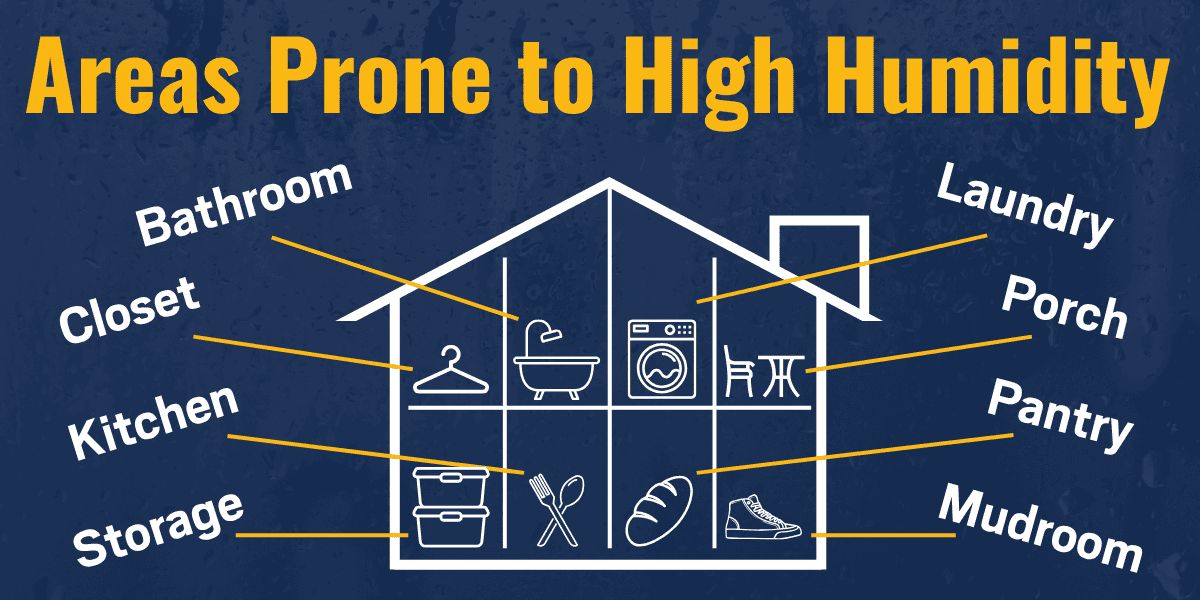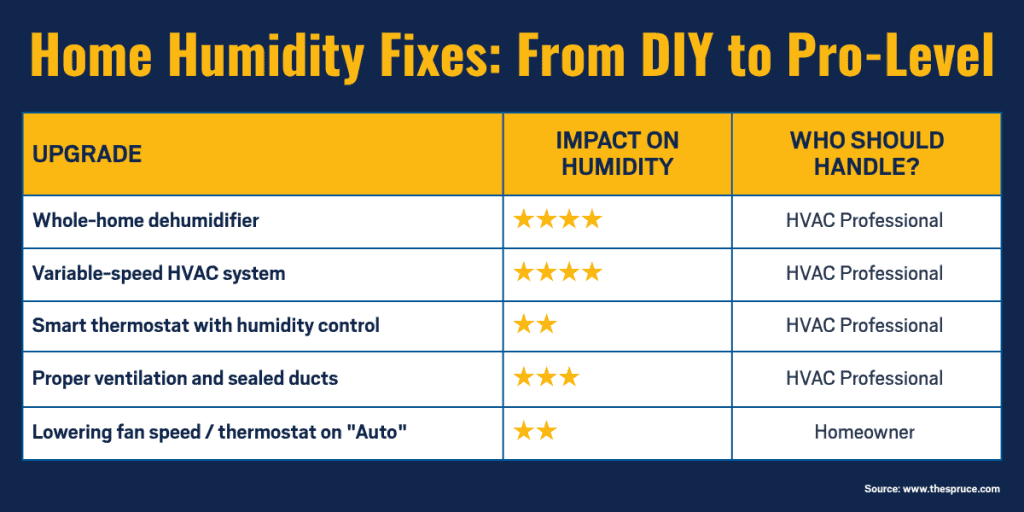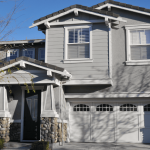
How to Control Humidity in the Summer Months
Summer has officially arrived in Florida and with it comes heat and that unmistakable wave of humidity we all know too well. The air feels thick and heavy, and you start sweating the moment you step outside, even in the shade. Your skin feels sticky instead of dry, and it’s hard to feel truly comfortable.
It’s no wonder that Floridians heavily rely on our HVAC systems to keep us cool during the summer months of June through August when the average relative humidity typically tops 80%. Your home should be an escape from, not a reminder of, the persistent mugginess and uncomfortable feeling of high humidity. Continue reading for humidity control tips to create an oasis in your home and how your HVAC system can help.

How Humidity Impacts Indoor Air Quality
Humidity has a significant effect on indoor air quality. It can promote the growth of pollutants, impact how comfortable a space feels and affect how well HVAC systems perform.
When humidity is too high (above ~60%), here’s how it affects your indoor environment.
Mold and Mildew Growth
- Moist environments promote mold and mildew on walls, ceilings, carpets and furniture.
- Mold spores reduce air quality and can trigger allergies and asthma.
Dust Mites Thrive
- High humidity encourages dust mites, a major allergen that worsens respiratory conditions.
VOC Emissions Increase
- Moisture can accelerate the release of volatile organic compounds (VOCs) from materials such as paint, flooring and furniture.
Stale, Musty Smells
- Persistent humidity causes odors that indicate microbial growth or trapped moisture.
Condensation Issues
- Moisture buildup on windows, pipes, or walls can lead to structural damage and poor air circulation.
When humidity is too low (below ~30%), here’s how it affects your indoor environment.
Dry Air Irritation
- Causes dry skin, a scratchy throat and eye irritation.
- Can also dry out mucous membranes, making you more vulnerable to colds and flu.
Static Electricity
- Dry air can make clothes and bedding cling together, cause small shocks and attract dust to surfaces.
Wood Damage
- Furniture, floors and musical instruments may crack or shrink.
Tips to Control Humidity in Your Home
1. Use a Dehumidifier
- Run a portable or whole-house dehumidifier to maintain indoor humidity between 45%–55%.
- Empty and clean the unit regularly to prevent mold buildup.
2. Run the Air Conditioner Efficiently
- Your HVAC system will naturally remove moisture from the air.
- Keeping your system well-maintained is necessary for it to operate effectively.
- Set the thermostat to auto mode instead of “on” to allow moisture to drain.
3. Ventilate Properly
- Use exhaust fans in bathrooms, kitchens and laundry rooms.
- Keep fans running longer after showers or cooking to help expel moisture.
4. Seal Air Leaks
- Weatherstrip windows and doors to humid outdoor air from entering.
- Check for leaks in the attic and around pipes.
5. Limit Indoor Moisture Sources
- Avoid overwatering houseplants.
- Hang clothes to dry outside rather than inside.
- Cover pots while cooking to reduce steam.
6. Use Moisture-Absorbing Products
- Place desiccants such as DampRid or silica gel in closets, pantries or small rooms.
- Let activated charcoal naturally absorb humidity and eliminate unwanted smells.
7. Monitor Humidity
- Invest in a hygrometer to keep tabs on your indoor humidity levels.
- Install a smart thermostat that continuously monitors indoor humidity levels and automatically adjusts your system.
Download this checklist to help determine if the humidity levels in your home are above or below the recommended levels.
What to Leave to the Professionals
1. Upgrade Your HVAC System
- Upgrade to a two-stage or variable-speed HVAC system for better humidity control and improved efficiency. Older models do not have the humidity control features of the newer systems.
- These systems run longer at lower speeds, giving more time to pull moisture out of the air.
2. Add a Dedicated Return in Humid Rooms
- A dedicated return helps your system pull air from humid spaces, such as bathrooms, leading to better airflow and moisture extraction.
3. Install a Thermostat with Humidity Control
- Some smart thermostats allow dehumidification control or alerts when humidity rises.
4. Consider an Energy Recovery Ventilator (ERV)
- ERVs capture conditioned air that has been exhausted from your home and use it to pre-treat the supply air, lightening the load on your HVAC system and helping it control the humidity.
5. Fix Leaks and Water Issues
- Repair plumbing leaks, roof issues or foundation cracks promptly.
- Use a sump pump or install a moisture barrier in crawl spaces if needed.

Simple Ways to Reduce Heat in Your Home
Lowering the amount of heat entering your home can help control indoor humidity. When your home stays cooler, your HVAC system can more effectively manage both temperature and moisture.
Ease the load on your HVAC system. A lower cooling load means your HVAC unit doesn’t have to work as hard and that improves its ability to dehumidify the air.
Block out the heat. Keep drapes or shades closed on east-, south- and west-facing windows during the day. This helps prevent warm, moist air from entering your home.
Choose the right window treatments. Light-colored curtains or drapes with a reflective backing can bounce heat away before it gets inside. Energy-efficient coverings let in natural light while minimizing heat gain.
Use fans wisely. When it’s humid outside, avoid setting your HVAC fan to “on.” Running the fan continuously can circulate moisture back into your living spaces after the system has already removed it.
Don’t forget your exhaust fans. Bathroom fans should be used during and after showers, and kitchen range hoods should run while cooking to remove excess moisture from the air.
Tired of That Sticky Feeling Indoors?
If your home always feels damp or muggy, you’re likely dealing with excess humidity. The most effective fix is a combination of heat-reduction strategies and dehumidification so that excess humidity stays outside where it belongs. A qualified local HVAC company can measure your indoor humidity, recommend the right adjustments or upgrades and help you take control of the problem. With regular maintenance, they can also monitor your home’s humidity levels year-round so you can stay comfortable in every season.
Trust the Experts
The professionals of Barineau Heating and Air Conditioning have been proudly serving north Florida, south Georgia and the Emerald Coast areas for more than 50 years and three generations with top-quality home comfort service. Through committed hard work, integrity, ingenuity and treating customers like family, Barineau has built a reputation as the premier HVAC service company in the area.
With Barineau Heating and Air Conditioning’s Total Comfort Service Program, you’ll receive a number of cost incentives, such as no overtime charges and a discount on repairs. Signing up for an annual plan removes the burden of having to remember annual maintenance appointments, and you will receive priority service whenever you need us. You can rest easy knowing that Barineau has your back and will remind you when it’s time for your appointment.
Have questions? Call our team at (850) 580-4029 or schedule an appointment.




